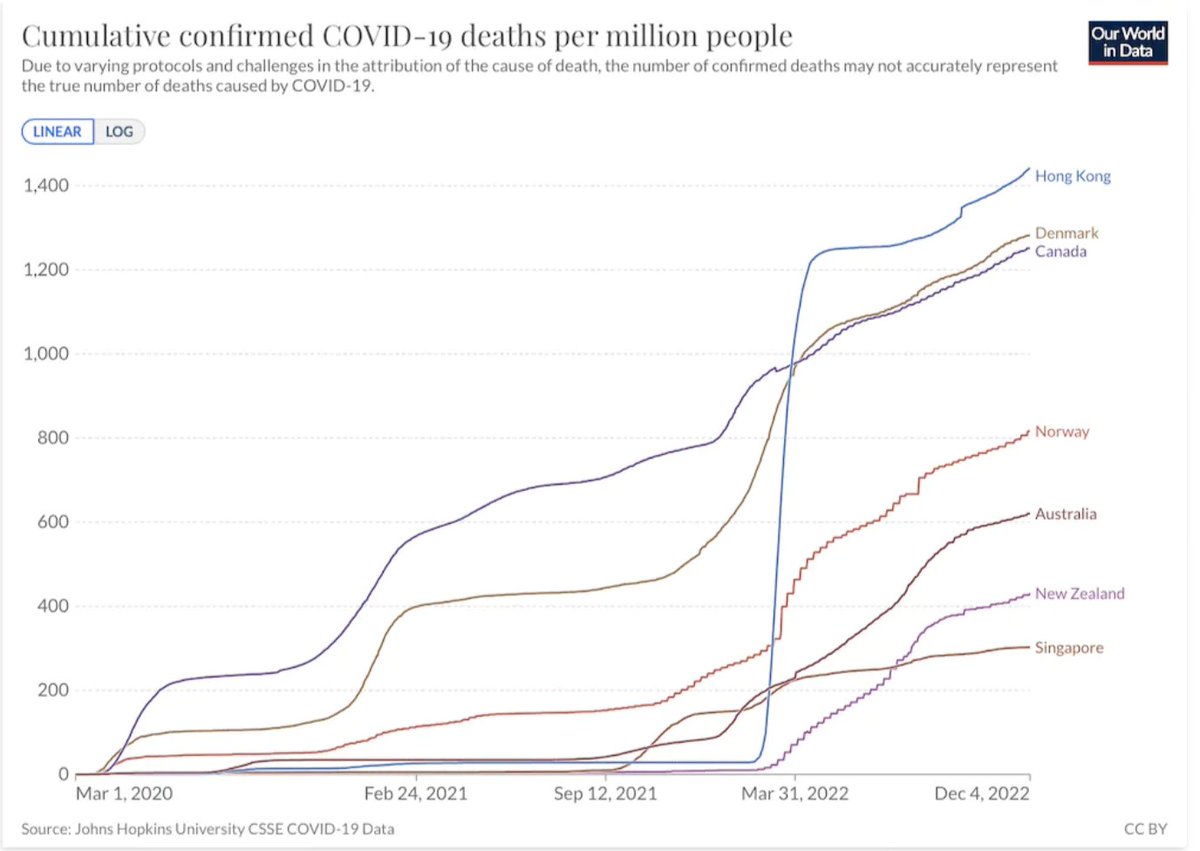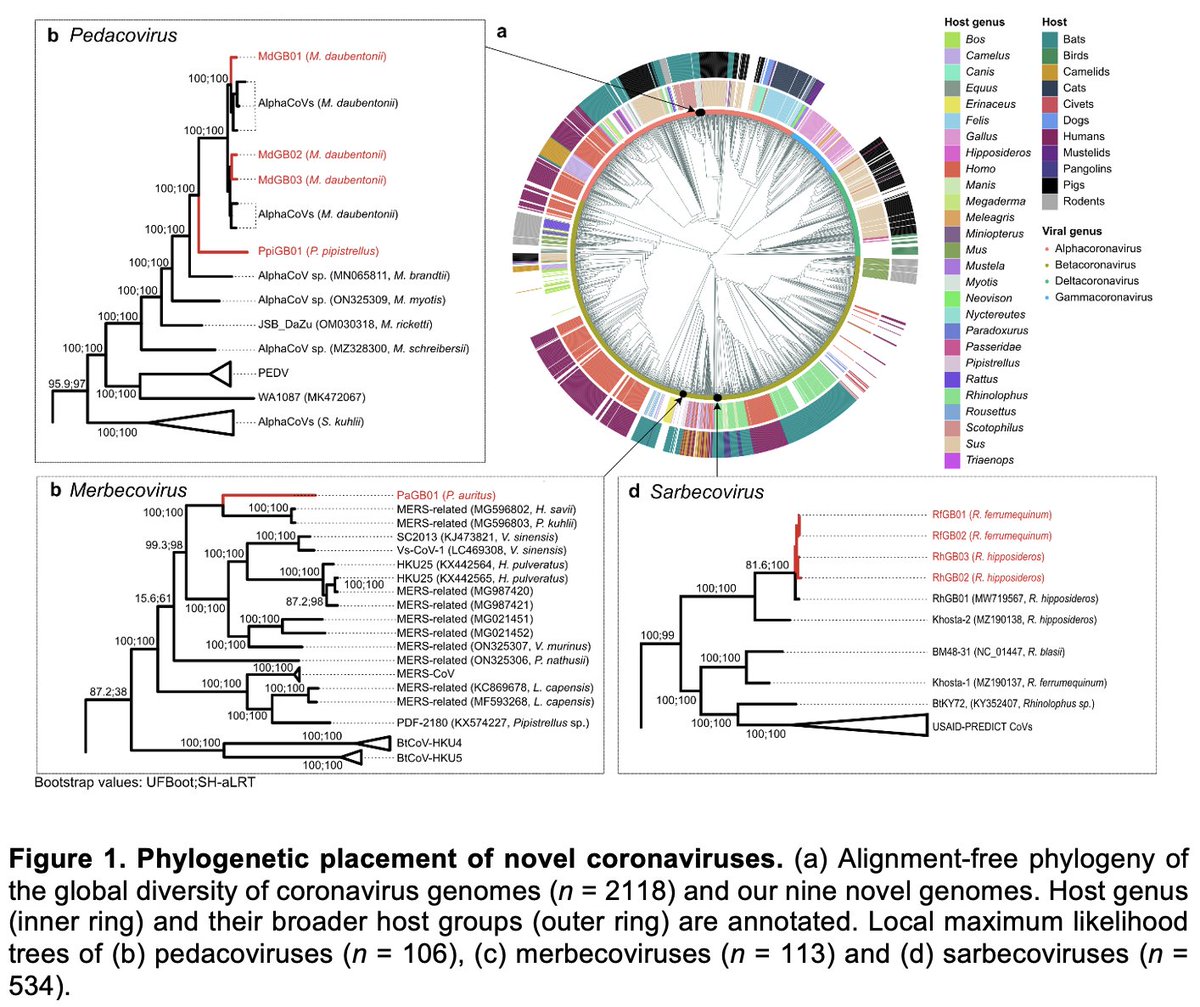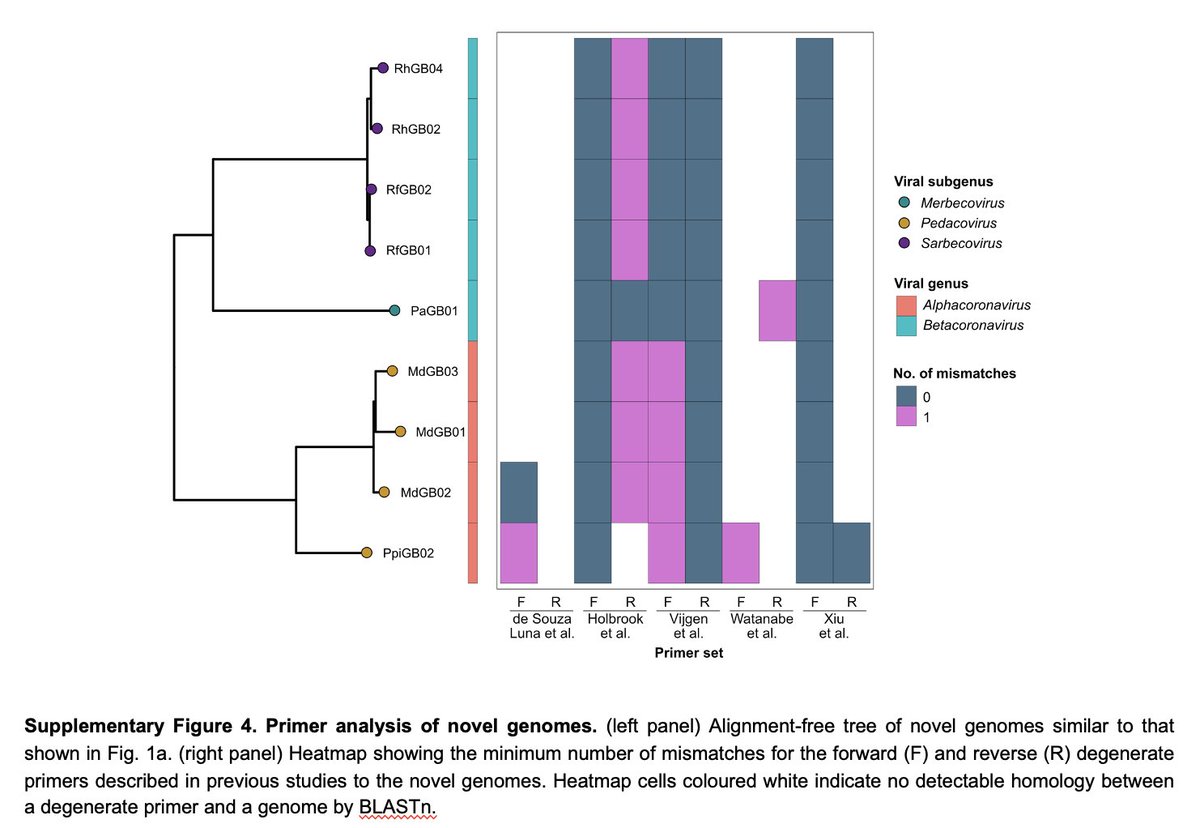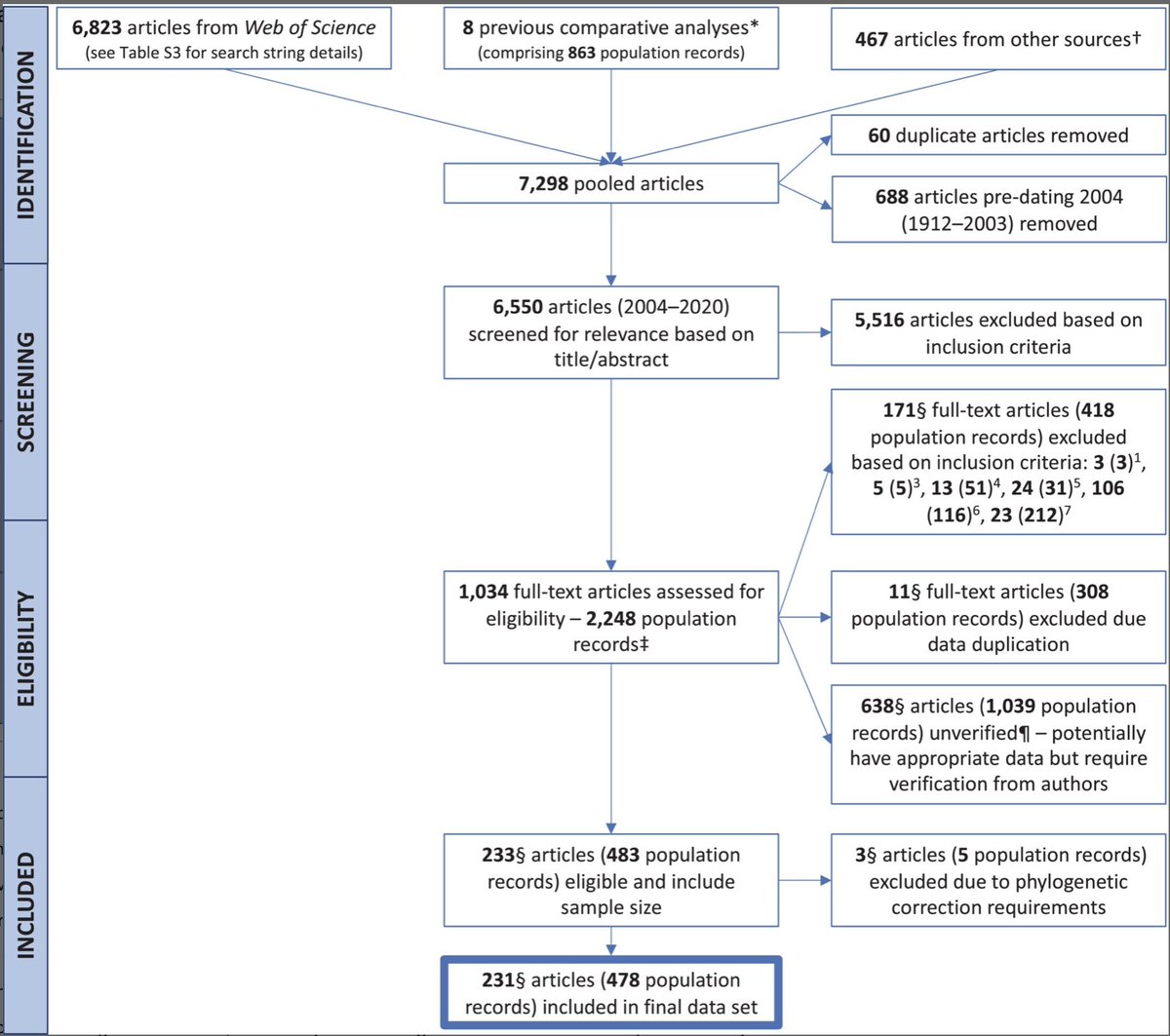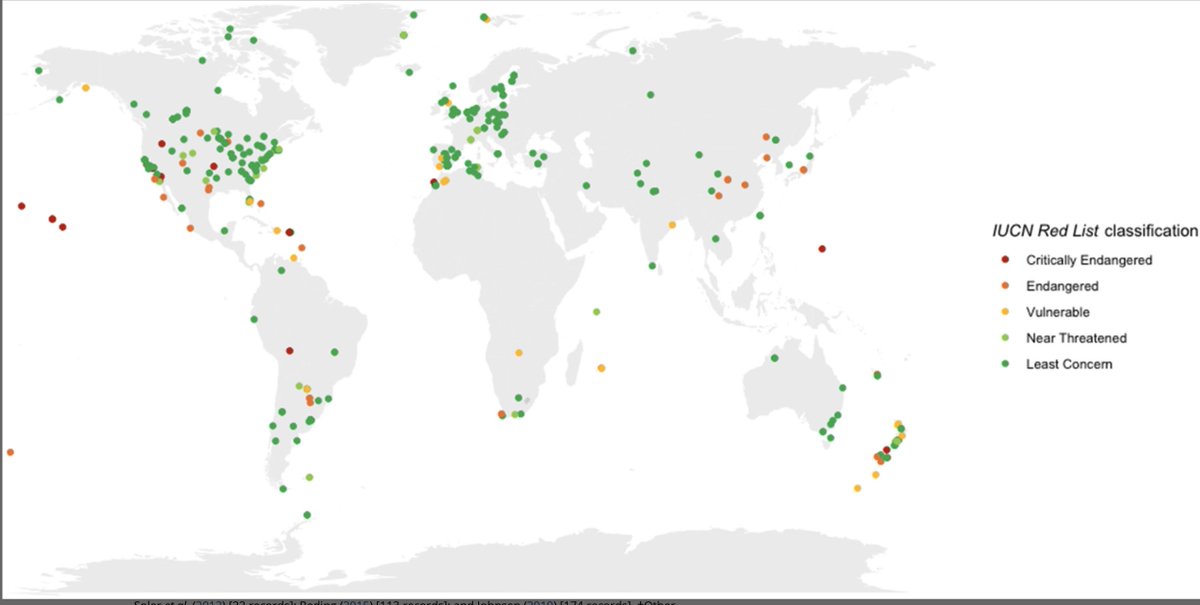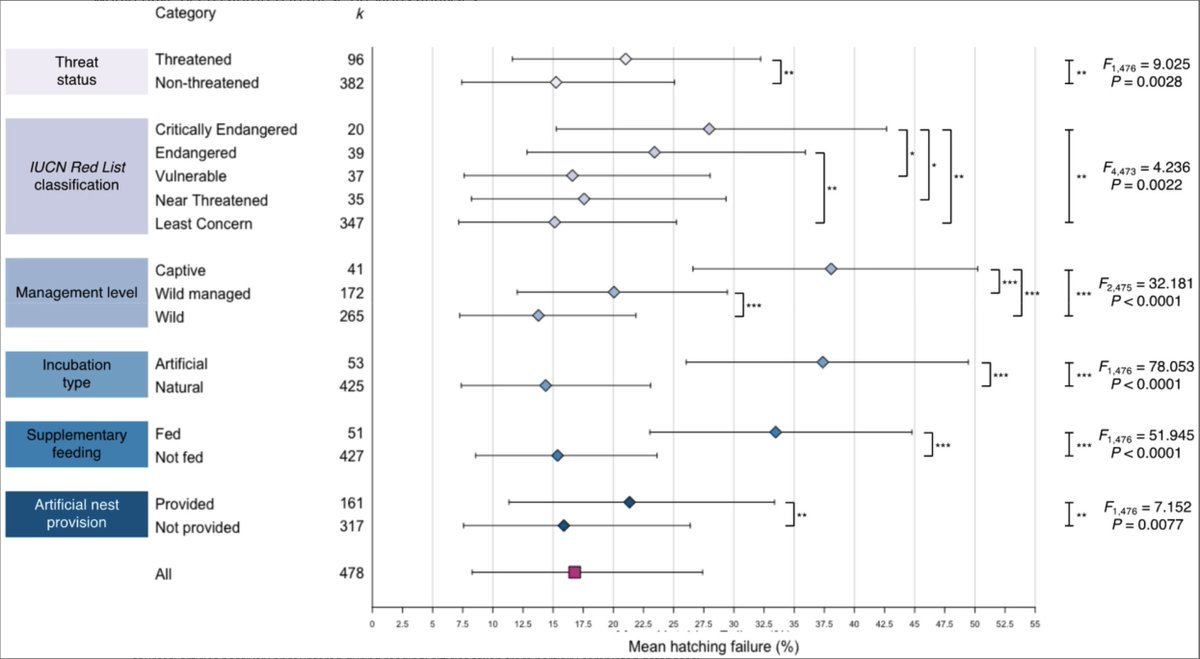
A brief thread on Influenza H5N1 avian influenza.
H5N1 is one of several Highly Pathogenic Avian Influenza (HPAI) lineages circulating in birds. It emerged in 1996, and caused major 'panzoonotics' in wild birds and poultry in 2005-2007 and 2021-2022.
1/
ecdc.europa.eu/en/zoonotic-in…
H5N1 is one of several Highly Pathogenic Avian Influenza (HPAI) lineages circulating in birds. It emerged in 1996, and caused major 'panzoonotics' in wild birds and poultry in 2005-2007 and 2021-2022.
1/
ecdc.europa.eu/en/zoonotic-in…
H5N1 causes regular spillovers into various species of wild and domestic mammals but it doesn't transmit well between mammals and those isolated cases or small clusters don't cause larger outbreaks outside birds.
2/
aphis.usda.gov/aphis/ourfocus…
2/
aphis.usda.gov/aphis/ourfocus…
An outbreak in a Spanish mink farm in early October 2022, which involved mink-to-mink transmission and likely adaptation to transmission in mammals drew attention to the risk of H5N1 after an article describing it was published in January this year.
3/
eurosurveillance.org/content/10.280…
3/
eurosurveillance.org/content/10.280…
~900 H5N1 infections in humans have been reported to date with an associated mortality of ~60%. The latter figure is probably an overestimate as a proportion of non-severe cases are likely missed. It remains that mortality in humans is very high (the same is true in birds).
4/
4/
In its current form H5N1 has little pandemic potential. Counter-intuitively maybe, pathogens with high associated mortality, short incubation time and rapid onset of symptoms are prone to cause devastating local outbreaks but are not good candidates for pandemics (eg. ebola).
5/
5/
What allowed SARS-CoV-2 to spread globally are its moderate case fatality rate and ability to transmit from by pre/a-symptomatic hosts. Paradoxically maybe, the most concerning scenario to me would be the emergence and spread in humans of an attenuated avian flu lineage.
6/
6/
There is no need to panic over H5N1, or at least no need to panic more over it now than at other times in the last 20 years. That said, I still most strongly advise against cuddling sick emus before they've been diagnosed by a vet ...
7/
npr.org/2022/10/26/113…
7/
npr.org/2022/10/26/113…
That should have read 'panzootics' and not 'panzoonotics' ... 🙄
Another recent piece on news that has attracted public attention to the risk of H5N1 is a mass die-off of seals in North America. Though, while this happened last summer.
8/
biorxiv.org/content/10.110…
8/
biorxiv.org/content/10.110…
Also mass die-offs in seals caused by avian influenza are not unprecedented. Several such events caused by various avian flu lineages have been reported since 1979.
9/
journals.asm.org/doi/full/10.11…
9/
journals.asm.org/doi/full/10.11…
To conclude (this was meant to be a brief thread). Avian flu is, and has been, a major concern for decades and it should be taken more serioulsy. Though, ironically enough, the risk is lower right now than it was a few months ago when essentially everyone was ignoring it.
10/
10/
OK, this won't be a "brief thread". Pathogen surveillance schemes in wild/domestic animals are useful and non-invasive. They should be stepped up. They can help quashing outbreaks early on, and contribute to animal welfare and conservation.
11/
Figure credit: @cedriccstan
11/
Figure credit: @cedriccstan
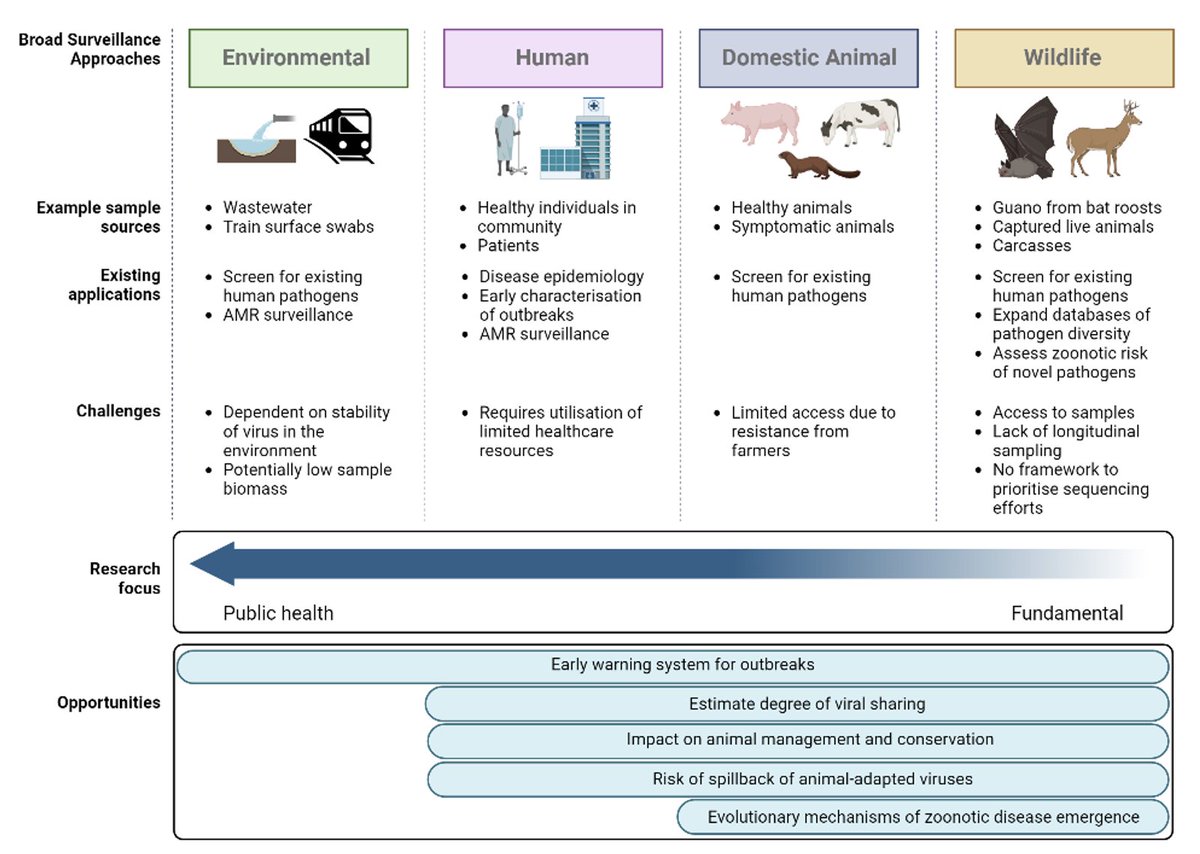
Large-scale production of flu vaccines has been available since ~1945. If required in the future, it would be straightforward to produce a large number of vaccine doses against any avian influenza lineage at short notice.
12/
12/
Avian flu vaccines would be unlikely to block transmission for long but they are expected to significantly reduce hospitalisation / death rates. Regrettably, we still don't have any great antiviral drug against flu. (sounds familiar, huh ...).
13/
13/
Flu vaccines are still primarily based on viral culture in chicken eggs, but the latest doomsday prophecy that a spillover of avian flu in humans meant the poultry industry eould be unable to produce the eggs needed for vaccine production is remarkably silly. Serioulsy ...
14/
14/
• • •
Missing some Tweet in this thread? You can try to
force a refresh


